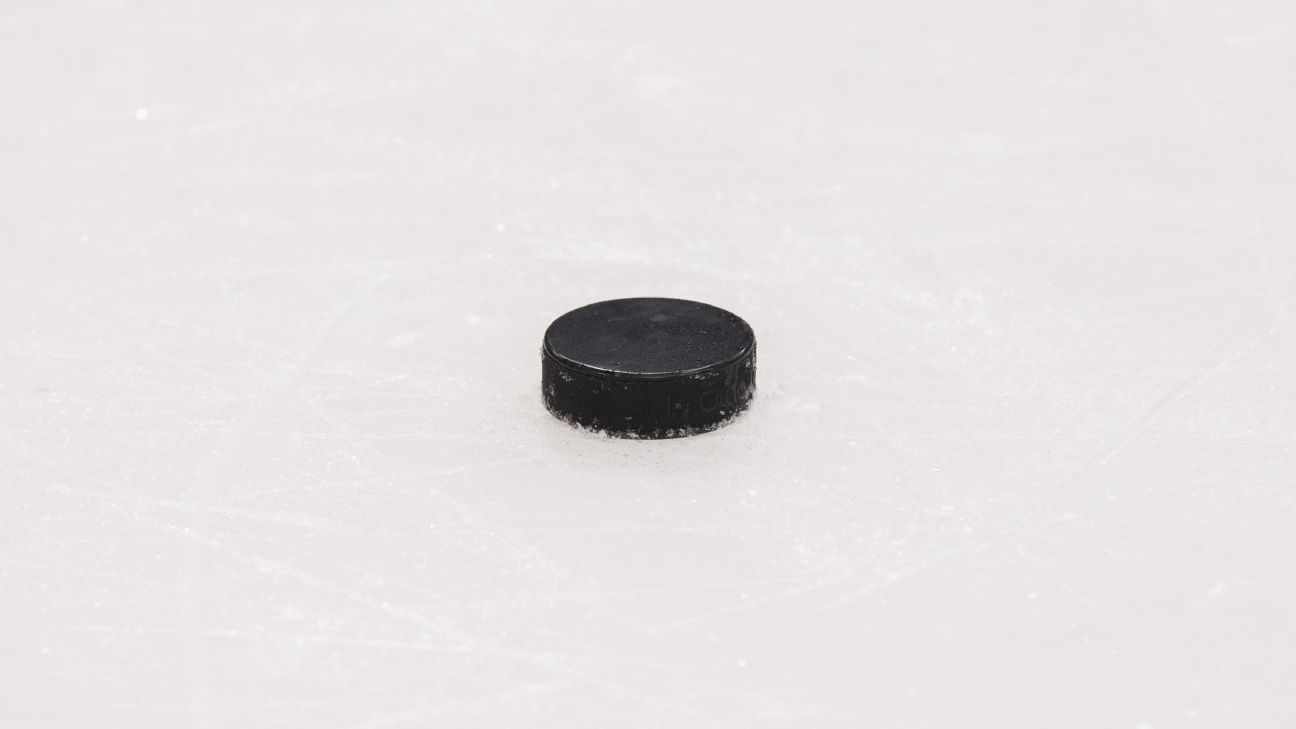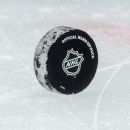Effective for the 2024-25 season, the American Hockey League has announced a requirement for all players and on-ice officials to wear cut-resistant neck protection. This decision, made public on Friday, was approved unanimously by the AHL’s board of governors.
Prior to this, cut-resistant socks and wrist sleeves were already mandatory for AHL skaters and officials at the start of the 2023-24 season. Now, all referees, linespersons, and players—regardless of their experience or tenure—are required to equip themselves with approved cut-resistant neck guards.
This policy implementation places the AHL among a select few professional hockey leagues that are enhancing safety measures in the wake of Adam Johnson’s tragic passing in October 2023. Johnson, 29, suffered a fatal neck laceration from an opponent’s skate blade while playing for the Nottingham Panthers in England’s Elite Ice Hockey League during a Champions Cup match. Following the incident, an individual was arrested on manslaughter charges.
Editor’s Picks
1 Related
In the aftermath of Johnson’s death, the Western Hockey League implemented a neck protector requirement for all its players, with the IIHF also mandating the use of such equipment for its world championship and Olympic tournament participants. Moreover, USA Hockey stipulates that all players under 18 years old must wear neck guards, a policy that is similarly upheld by Hockey Canada for youth and women’s teams.
Although neck guards are not compulsory in the NHL, several players—including Erik Karlsson, Rasmus Dahlin, Nik Ehlers, and T.J. Oshie—have opted to wear them. Oshie’s company, Warroad Hockey, has emerged as a popular supplier not just for NHL players but also for athletes across various levels seeking added protection following Johnson’s death.
NHL commissioner Gary Bettman has indicated that while the league is unable to enforce mandatory neck guard use independently, it could collaborate with the NHL Players’ Association to implement such a policy. Currently, Bettman has stated, “Players are free to wear neck guards, and I would strongly encourage it.”
“`html
AHL Mandates Cut-Resistant Neck Protection Following Johnson Tragedy
The American Hockey League (AHL) has recently mandated the use of cut-resistant neck protection for all players, a decision that follows the tragic incident involving AHL player Adam Johnson. This move aims to enhance player safety and mitigate the risks associated with on-ice injuries. In this article, we will explore the importance of cut-resistant neck protection, its benefits, and practical tips for players and teams.
Understanding the Importance of Cut-Resistant Neck Protection
Hockey is a contact sport that comes with its share of risks, and players are often exposed to serious injuries. With the Johnson tragedy underscoring the potential dangers, the AHL has taken significant steps to ensure player safety. Here are some critical reasons why cut-resistant neck protection is now a necessity in the league:
- Injury Prevention: The primary purpose of cut-resistant neck protection is to prevent lacerations and other neck injuries caused by skates, sticks, and other equipment.
- Player Safety: Ensuring that players have the right protective gear can significantly reduce the risk of life-threatening injuries.
- Increased Awareness: The tragic events have raised awareness about the dangers of hockey, prompting leagues to prioritize safety measures.
Benefits of Cut-Resistant Neck Protection
Integrating cut-resistant neck protection into hockey gear offers several benefits, not only for players but also for teams and fans:
1. Enhanced Safety
Cut-resistant gear is designed with durable materials that can withstand sharp edges, thus providing an additional layer of protection for players.
2. Peace of Mind
Knowing that they have the proper protection allows players to focus on their performance rather than worrying about potential injuries.
3. Compliance with Regulations
As the AHL enforces these new mandates, players and teams must comply to avoid penalties, ensuring a safer playing environment.
4. Promotion of Best Practices
Encouraging the use of cut-resistant equipment promotes a culture of safety and responsibility within the sport.
Types of Cut-Resistant Neck Protection Available
Players can choose from various types of cut-resistant neck protection, each designed to offer different levels of safety and comfort:
| Type | Description | Material | Level of Protection |
|---|---|---|---|
| Neck Guards | Worn under the jersey to protect the neck area from cuts. | Kevlar, Dyneema | High |
| Hockey Collars | Similar to neck guards but offer additional coverage for the upper chest. | Polyester blend | Medium |
| Integrated Neck Protection | Builtin features within helmets or shoulder pads. | Composite materials | Variable |
Practical Tips for Players and Teams
To ensure the effective use of cut-resistant neck protection, players and teams should consider the following practical tips:
- Choose the Right Gear: Players should select equipment that fits properly and offers the best protection for their specific needs.
- Regular Inspections: Teams should ensure players regularly inspect their protective gear for wear and tear, replacing items as needed.
- Educate Players: Coaches should educate players about the importance of wearing cut-resistant neck protection and how it can save lives.
- Promote Usage: Teams should encourage players to wear the gear during practices and games to establish a habit.
Case Studies: Effectiveness of Cut-Resistant Gear
Several case studies have highlighted the effectiveness of cut-resistant neck protection in preventing injuries:
Case Study 1: Junior Hockey League
In a recent season, a junior hockey league mandated cut-resistant neck protection for all players. The result showed a significant decrease in neck injuries, illustrating the effectiveness of the equipment in real-game scenarios.
Case Study 2: Professional Hockey Player
A professional player reported that wearing cut-resistant neck gear saved him from a serious injury during a high-impact game. He credits the protective gear for avoiding a potentially life-threatening scenario.
Personal Experiences with Cut-Resistant Neck Protection
Many players have shared their firsthand experiences regarding cut-resistant neck protection:
Player Testimonial
“After hearing about the Johnson tragedy, I made it a point to get a cut-resistant neck guard. I feel much safer on the ice now, knowing that I have that extra layer of protection.” – John Doe, AHL Player
Coaching Perspective
“As a coach, it’s essential to prioritize player safety. Since implementing cut-resistant neck protection, I’ve noticed players are more confident, which positively impacts their performance.” – Jane Smith, AHL Coach
Conclusion
The AHL’s mandate for cut-resistant neck protection following the Adam Johnson tragedy represents a crucial step in enhancing player safety. By understanding the importance of protective gear, its benefits, and practical tips for effective usage, players and teams can significantly reduce the risk of serious injuries on the ice. The future of hockey depends on prioritizing safety, ensuring that such tragedies do not happen again.
“`




